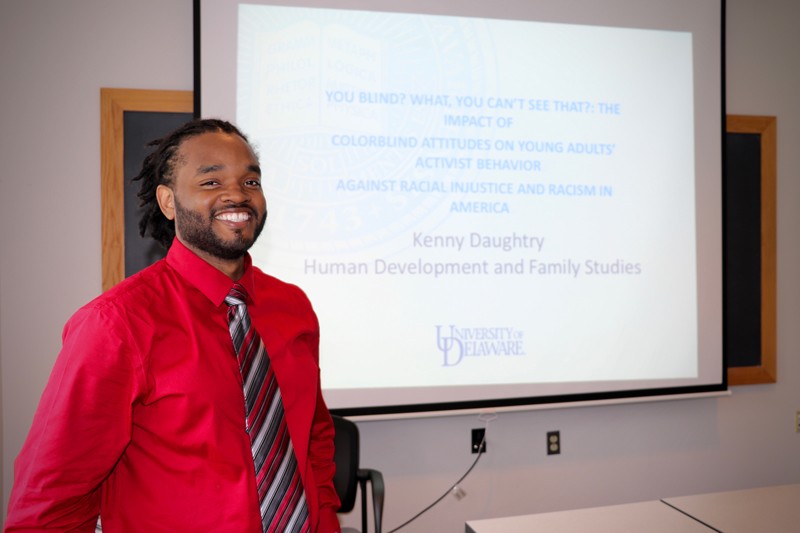Human Development and Family Sciences
Do You See Skin Color?

UD doctoral student’s research explores the intersection of racism and activism
Have you ever heard a well-meaning person say, “I don’t see skin color,” and wondered if that person sees you? Is it just an empty phrase filled with good intentions? Or does using this phrase support systemic oppression?
The notion of colorblindness may sound good in theory, like some kind of unifying idea for a post-racial America. However, attitudes like this perpetuate racism, according to research by Kendell Daughtry, who is completing his doctoral studies in the Department of Human Development and Family Sciences (HDFS) at the University of Delaware.
“Colorblind attitudes give people the idea that race doesn’t matter — that race is not a factor in education, jobs or the justice system,” said Daughtry. “Because if people can’t ‘see skin color,’ then they won’t see that there is discrimination because of skin color.”
In a study published in 2019 in the Journal of African American Studies, Daughtry surveyed 222 people between the ages of 18 and 35 to learn more about how individuals self-identify with their own ethnic group — i.e., do they “see color” — and how this decision affects attitudes toward racial injustice. Coauthored with HDFS faculty Valerie Earnshaw, Robin Palkovitz and Bahira Trask, the study asked participants approximately 40 questions, and the pool of respondents was narrowed to only those who had completed at least six years of schooling in the United States.
Daughtry discovered a positive correlation between color blindness and a form of racism known as “social dominance orientation,” which is a measure widely used by social scientists to determine a person’s preference for social hierarchies. The less support a person exhibits for group equality, the stronger that person’s social dominance orientation.
“So if I’m adhering to this colorblind attitude — even unknowingly — then I am allowing racism to continue because I don’t see color,” said Daughtry.
Read the full article in UDaily
